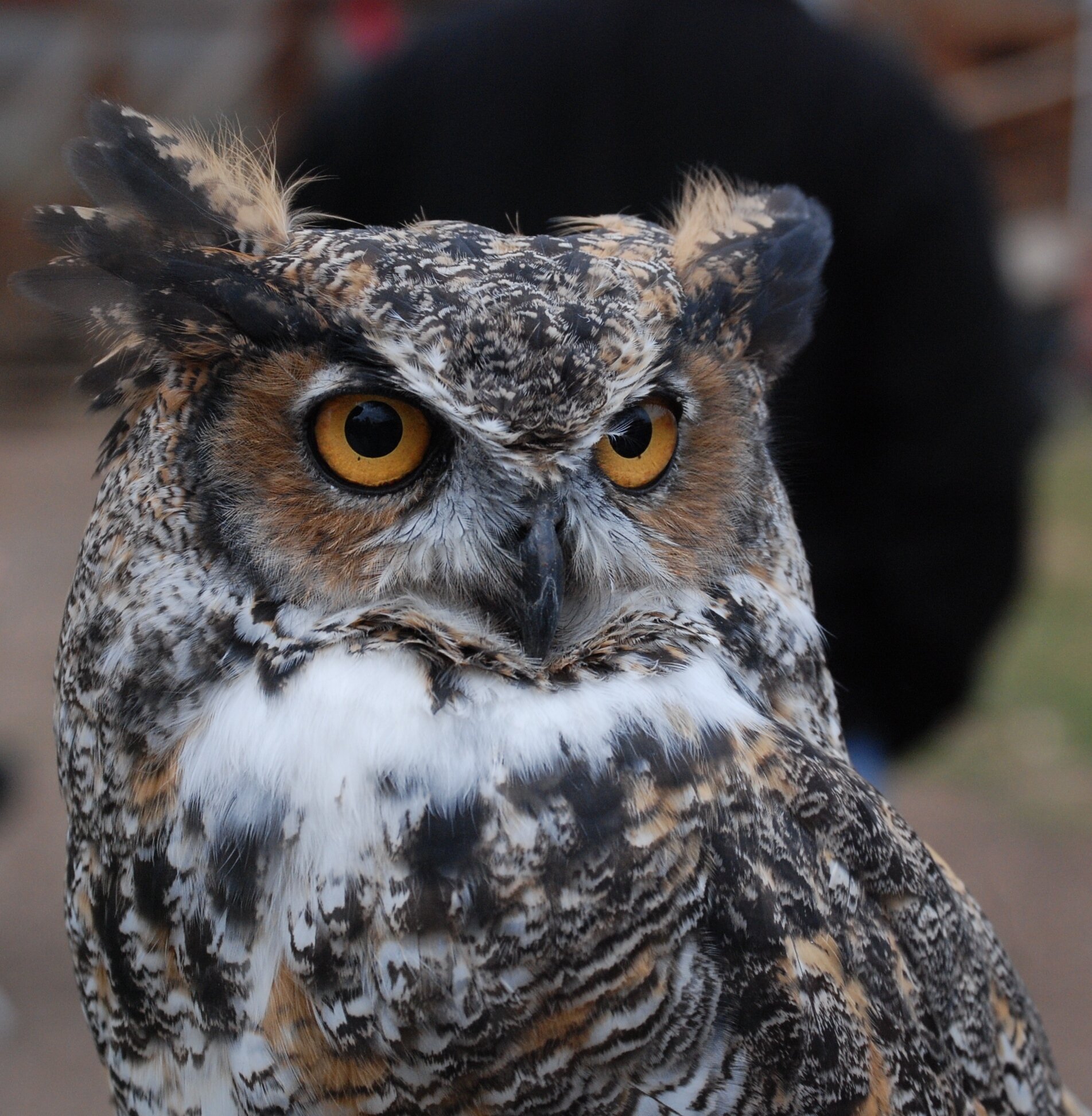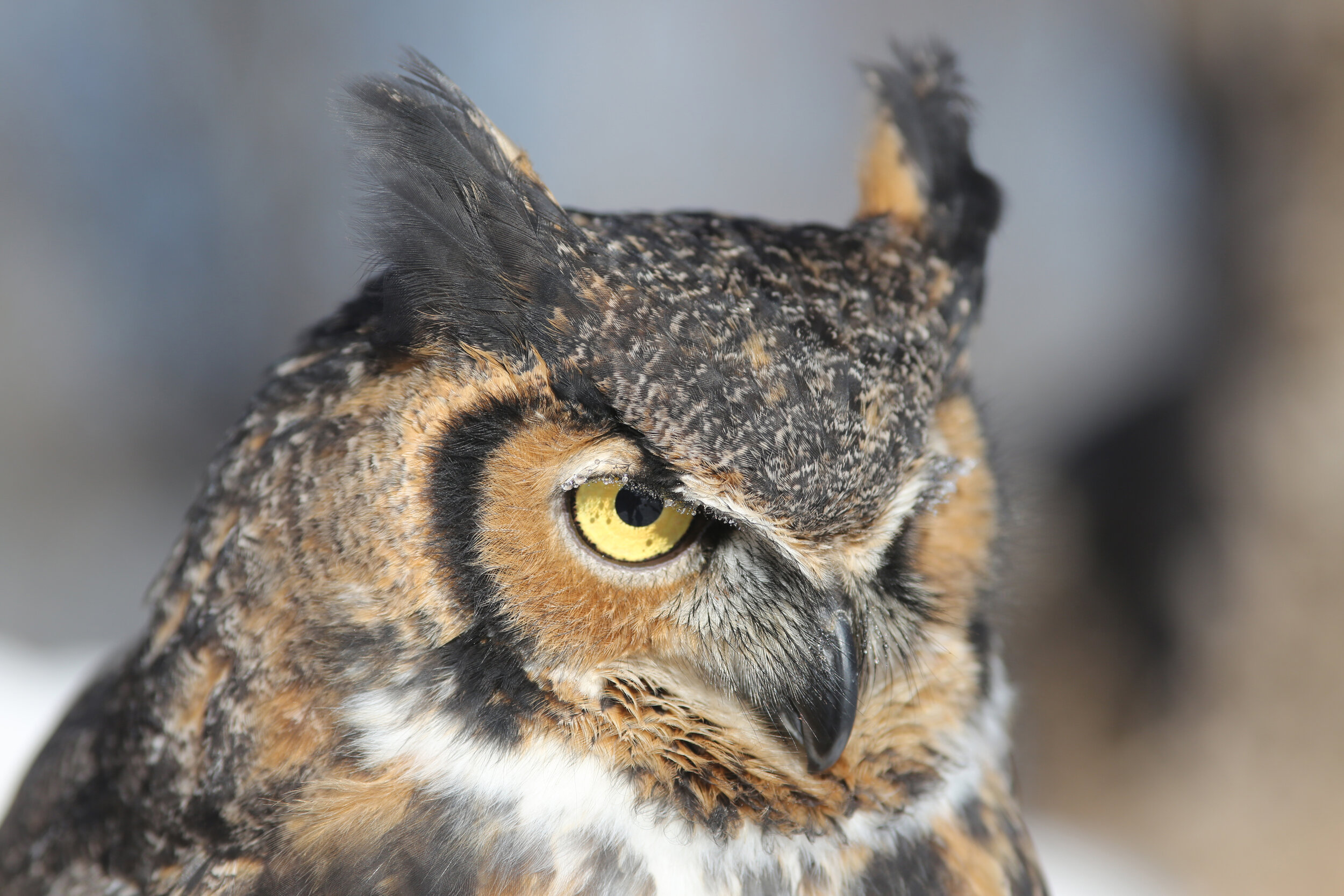Great Horned Owl
Bubo virginiansus
IDENTIFICATION
Length: Great horned owls can be 19 to 35 inches tall, with a wingspan of about 4.6 feet.
Weight: Great horned owls generally weigh between 2.2 and 3.8 pounds.
Color: They have a large head and body with yellow, forward-directed eyes. They have a white and brown face with a distinctive locket of white at the throat. Their beak is black. The bare portion of their toes is a light brownish gray, with black tipped talons.
Sound: They produce a deep, soft hoots with a stuttering rhythm: hoo-h’HOO-hoo-hoo.
HABITAT
Range: Amongst the world's most adaptable owls, great horned owls can be found across North America in deciduous, coniferous, mixed forests, prairies, mountains, deserts, subarctic tundra, rocky coasts, mangrove swamp, and some urban areas.
Diet: Most (up to 90%) of a great horned owl's diet consists of mice, voles, squirrels, and other small mammals. These owls also feed on hawks, crows, waterfowl, and other birds, including smaller owls.
Status: Least Concern. The global population is estimated to be at 6 million individuals across more than 20 subspecies.
Tail feathers of an adult male Great Horned Owl. Image from Feather Atlas (USFWS)
LIFE CYCLE
Reproduction: Great horns begin nesting in January or February, and usually lay their eggs in abandoned nests of squirrels, hawks, or crows. They may also nest on cliff ledges or in hollow trees. Female owls lay 1 to 5 eggs, which hatch in 30 to 37 days. Newly hatched young are covered with down. Their eyes do not open until they are 7 or 8 days old. The young owlets leave the nest at 6 to 9 weeks of age.
Adaptations: Owls have a great ability to see in the dark, tremendous head mobility (12 to 14 vertebrae as opposed to the 7 found in mammals), highly developed hearing (due to asymmetrical ear slits), and are good friends to farmers because of their expertise in catching rodents.
The best time to hear a great horned owl is during the winter, as they hoot most frequently during the courtship season.
Minnesota has 4 species of “tufted” owls: Great Horned, Long-eared, Short-eared, and Eastern Screech.
Great Horned Owl range (North America only). Image from Owling.com.






